Mirage
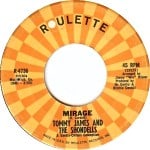 One notable absence from the WKNR Music Guide is Tommy James’ monster hit, “I Think We’re Alone Now“. Keener didn’t play it because Mrs. Knorr was uncomfortable with the lyrics.
One notable absence from the WKNR Music Guide is Tommy James’ monster hit, “I Think We’re Alone Now“. Keener didn’t play it because Mrs. Knorr was uncomfortable with the lyrics.
She wasn’t alone. The song, written by Ritchie Cordell, author of some of the Shondell’s most successful hits, was witheld from the airwaves at a number of radio stations across the country. Although it’s pretty tame by today’s standards, “Too suggestive” was the common complaint in 1967.
But “I Think We’re Alone Now” did find it’s way to Keener. In Reverse. Late one evening, producer Bo Gentry was experimenting with a tape recorder and played the song backwards. He liked what he heard, and so did the band. Cordell wrote some lyrics and before we knew it, “Mirage” was at number eleven on Keener the week of May 1st 1967.
Ritchie Cordell went on to produce bubble gum hits for Crazy Elephant an 1910 Fruit Gum Company. He had a ten year hiatus from the music business before returning to produce Joan Jett’s “I Love Rock and Roll” album.
He’s one of the few song writers to have one number one follow another. That was the province of the Beatles until Billy Idol’s version of “Mony Mony” replaced Tiffany’s cover of “I Think We’re Alone Now” in 1987.
Hear the Shondells sing “Mirage”, along with it’s inspiration, played backwards here.
Aircheck of the Week: Dave Prince
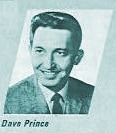 Remember Sangoo? That was the nick name we associated with Dave Prince during his reign as the evening ace on WKMH. This 1962 aircheck from the Bob Green Collection gives you a great feel for the pre-Keener sound. Juxtapose it with last week’s Gary Stevens aircheck and take note of the differences. For one, you’ll hear Ernie Harwell’s voice promoting Tiger Baseball. Fred Knorr was part owner in those days and before Keener, WKMH was the broadcast home of the Tigers. You’ll notice that when Keener exploded on the scene, the focus was definitely on the music as opposed to the jingles, which got much shorter. The overall energy of the announcers turned up about three notches and there was a total emphasis on listener involvement in the fun.
Remember Sangoo? That was the nick name we associated with Dave Prince during his reign as the evening ace on WKMH. This 1962 aircheck from the Bob Green Collection gives you a great feel for the pre-Keener sound. Juxtapose it with last week’s Gary Stevens aircheck and take note of the differences. For one, you’ll hear Ernie Harwell’s voice promoting Tiger Baseball. Fred Knorr was part owner in those days and before Keener, WKMH was the broadcast home of the Tigers. You’ll notice that when Keener exploded on the scene, the focus was definitely on the music as opposed to the jingles, which got much shorter. The overall energy of the announcers turned up about three notches and there was a total emphasis on listener involvement in the fun.
Perhaps the biggest revelation is how good Dave sounds. He executes the WKMH format well, is clearly having fun and makes for an entertaining and surprisingly listenable sound. Tighten the playlist, turn the focus on the music, shorten the jingles and Sangoo would fit just fine into the Keener vibe. Dave would continue to shine on the Detroit airwaves at WXYZ and CKLW.
The Little Old Lady From Pasadena
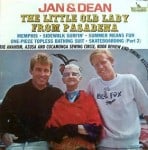 Every now and then an idea and an individual collide to create an icon. In 1984 Clara Peller propelled Wendy’s to the front of our consciousness when she asked, “Where’s the Beef?” Twenty years earlier, a 72 year old character actress was the inspiration for a top 10 smash for Jan & Dean.
Every now and then an idea and an individual collide to create an icon. In 1984 Clara Peller propelled Wendy’s to the front of our consciousness when she asked, “Where’s the Beef?” Twenty years earlier, a 72 year old character actress was the inspiration for a top 10 smash for Jan & Dean.
In the mid 1950s, Kathryn Minner and her husband, Sam, followed their son from New Jersey to Southern California when his insurance job transferred him there. in 1957, at age 65, she made her first television appearance in the “Big Switch” episode of Dragnet. For the next decade, she played the archetypical little old lady in a wide array of television and movie assignments from “I Spy” and “The Man from U.N.C.L.E” to Disney’s “Love Bug”. She came into her acting prime in the wake of a series of ten TV commercials for the Southern California Dodge Dealers, promoting their popular muscle cars with the tag line, “Put a Dodge in your garage, honey!”
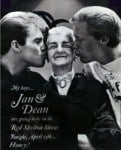 It was the era of the hot rod and when Brian Wilson needed to add authenticity to his automotive lyrics, he turned to future KHJ Boss Jock Roger Christian. Together, they crafted “Ballad of Ole’ Betsy”, “Car Crazy Cutie”, “Cherry, Cherry Coupe”, “Don’t Worry Baby”, “In the Parkin’ Lot”, “Little Deuce Coupe”, “No-Go Showboat”, “Shut Down” and “Spirit of America.”
It was the era of the hot rod and when Brian Wilson needed to add authenticity to his automotive lyrics, he turned to future KHJ Boss Jock Roger Christian. Together, they crafted “Ballad of Ole’ Betsy”, “Car Crazy Cutie”, “Cherry, Cherry Coupe”, “Don’t Worry Baby”, “In the Parkin’ Lot”, “Little Deuce Coupe”, “No-Go Showboat”, “Shut Down” and “Spirit of America.”
But Christian didn’t just write for the Beach Boys. The Wilsons were early supporters of the duo of Jan Berry and Dean Torrence, sometimes appearing on double-bills and covering one another’s hits. Christian’s pen contributed to six Jan and Dean hits, including their two biggest, “Dead Man’s Curve” and “The Little Old Lady From Pasadena”.
Christian was inspired by Minner’s Dodge commercials and, writing with Jan Berry, put her character on a hit record. “The Little Old Lady From Pasadena” peaked at number three on the Billboard charts. It became Keener’s Key Song of the Week on June 11, 1964, climbing to number eleven on the 2nd of July. A Beach Boy cover version appears on their “Beach Boys Concert” LP.
Minner continued to work prolifically until her death on May 28, 1969. Her final role was in the Andy Griffith vehicle, “Angel In My Pocket“. But her spirit lives every time we take out the Liberty Records 45 that she helped to create.
Do You Miss Dick Purtan?
 We do! If there ever was a personality who played ringmaster to the soundtrack of our lives, it was Dick Purtan. From the day he came to WKNR until his retirement from WOMC, he made more people laugh and probably raised more money for good causes than any other radio personality of the day.
We do! If there ever was a personality who played ringmaster to the soundtrack of our lives, it was Dick Purtan. From the day he came to WKNR until his retirement from WOMC, he made more people laugh and probably raised more money for good causes than any other radio personality of the day.
Dick may be retired, but he’s still entertaining. His website, DickPurtan.com features regular podcasts with Dick and his team, commenting on the passing scene with the same smart, acerbically funny vibe that we know and love.
Join his growing legion of on-line fans at DickPurtan.com. And listen to classic Keener Purtan in our Aircheck Archive.
Red Rubber Ball
 One of the great things about the mid 60s was the eclecticism of Top 40 playlists. As the summer of 66 came upon us, Keener’s playlist had everything from “Hey Joe” by the Leaves to “Tar & Cement” by Verdelle Smith, to the Cyrkle’s pre-bubble gum smash, “Red Rubber Ball”. The tune was the brainchild of Paul Simon, working with Bruce Woodley of The Seekers. Roy Halee, who would guide Simon & Garfunkle to the top of the charts was assigned to work with the Cyrkle on a pair of singles. The result peaked at #5 on the WKNR Music guide, the week of June 26th. In this Mix Magazine Classic Track column, we hear the story of the band, how their two hit records came to be and their brief prime in the white hot rock spotlight. It’s a story where Keener played a role. The Cyrkle opened for the Beatles in Detroit that year, and even as the band feared that they might get booed off the state, Motor City Fans welcomed them with enthusiasm and class. Those were the days.
One of the great things about the mid 60s was the eclecticism of Top 40 playlists. As the summer of 66 came upon us, Keener’s playlist had everything from “Hey Joe” by the Leaves to “Tar & Cement” by Verdelle Smith, to the Cyrkle’s pre-bubble gum smash, “Red Rubber Ball”. The tune was the brainchild of Paul Simon, working with Bruce Woodley of The Seekers. Roy Halee, who would guide Simon & Garfunkle to the top of the charts was assigned to work with the Cyrkle on a pair of singles. The result peaked at #5 on the WKNR Music guide, the week of June 26th. In this Mix Magazine Classic Track column, we hear the story of the band, how their two hit records came to be and their brief prime in the white hot rock spotlight. It’s a story where Keener played a role. The Cyrkle opened for the Beatles in Detroit that year, and even as the band feared that they might get booed off the state, Motor City Fans welcomed them with enthusiasm and class. Those were the days.
Aircheck of the Week: Gary Stevens
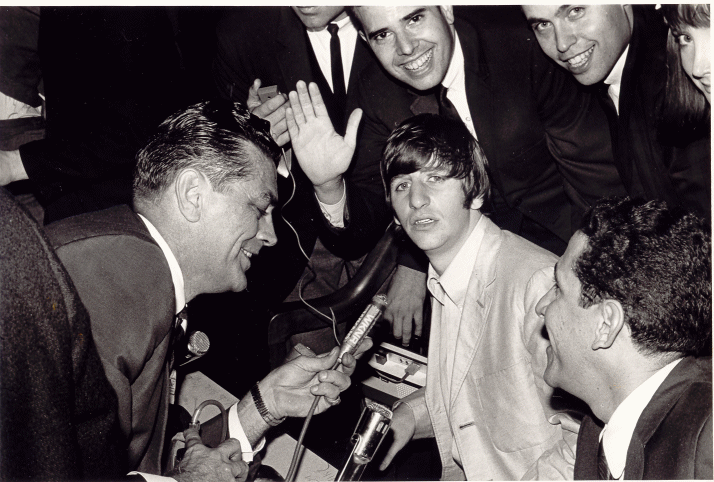 In July of 1964, Keener has cemented it’s reputation as the hottest rock n roll radio station in Detroit. The jock line-up looked included Frank “Swingin'” Sweeney, Robin Seymour, Jerry Goodwin, Gary Stevens, Bob Green and Bill Phillips. Every one would continue to make waves on the radio for years to come. For Gary Stevens, making waves would be literal when he graduated from Keener to, among other things, hosting a show on a pirate radio station that was bringing pop music to Great Britain.
In July of 1964, Keener has cemented it’s reputation as the hottest rock n roll radio station in Detroit. The jock line-up looked included Frank “Swingin'” Sweeney, Robin Seymour, Jerry Goodwin, Gary Stevens, Bob Green and Bill Phillips. Every one would continue to make waves on the radio for years to come. For Gary Stevens, making waves would be literal when he graduated from Keener to, among other things, hosting a show on a pirate radio station that was bringing pop music to Great Britain.
But that was in the future. In this air-check, we hear Gary at the peak of his powers, complete with a pitch for Edgewater Park, the introduction of a new food product, “Dannon Yogurt”, a visit from the Wolly Burger, and a large helping of British Invasion talent including Billy J. Kramer and Peter and Gordon. Number one that week was a Motown smash from the Supremes.
Click the link and feel the energy as only Gary Stevens could generate it.
That’s Gary Stevens standing directly behind Ringo. WKNR Newsman George Hunter is doing the interview as Robin Seymour and Bob Green look on.
Led Zeppelin 1
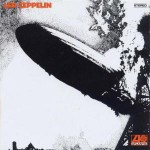 January 16, 1969 – That’s 43 years ago as of this writing – A new rock band burst on the American scene. And the landscape hasn’t been the same since. It’s a group that Rolling Stone to the raw energy and originality of the MC5 and the Stooges, and it evolved into one of the most successful acts of the 1970s.
January 16, 1969 – That’s 43 years ago as of this writing – A new rock band burst on the American scene. And the landscape hasn’t been the same since. It’s a group that Rolling Stone to the raw energy and originality of the MC5 and the Stooges, and it evolved into one of the most successful acts of the 1970s.
It all began five months earlier in England when the Yardbirds disbanded. The group hit three times on Keener, with “For Your Love”, “Shapes of Things”, “Over Under Sideways Down” and “Little Things”. But by August 1968, only Guitarist Jimmy Page remained. Obligated to perform additional dates in Scandinavia, Page, enticed bassist John Paul Jones, vocalist Robert Plant and drummer John Bonham to come along. Continue reading “Led Zeppelin 1” →
I Want to Hold Your Hand
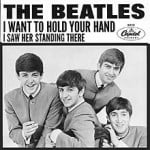 On January 17, 1964 The Beatles charted the first of their 13 number one hits on the WKNR Music Guide, launching the British invasion and changing rock and roll forever.
On January 17, 1964 The Beatles charted the first of their 13 number one hits on the WKNR Music Guide, launching the British invasion and changing rock and roll forever.
By one account, it was written at the behest of manager Brian Epstein who wanted a song that would appeal to American audiences, although producer George Martin disputes this. In a 1980 Playboy interview, John Lennon said that “I Want to Hold Your Hand” was created side by side as he and Paul McCartney sat at a piano in the basement of Paul’s girlfriend’s house, Continue reading “I Want to Hold Your Hand” →
Classic Tracks from Mix Magazine – Rag Doll
 The success of the Jersey Boys Broadway show has introduced an entire new generation to the life and music of Frankie Valli and the Four Seasons. One of my most cherished albums is Vee Jay records “International Battle of the Century“, where the label pitted the Seasons against the Beatles. It was the result of Capitol’s myopic decision to pass on an American release of the first two EMI Beatles singles. Vee Jay bought the rights and shipped “Introducing the Beatles” on October 1, 1964. As the band gained traction in the US demand for the record skyrocketed. In a brilliant piece of marketing, Vee Jay combined “Introducing the Beatles” with “Golden Hits of the Four Seasons”, a two album set, wrapped in the cover you see at left. The package even came with a card where you could vote for your favorite. Continue reading “Classic Tracks from Mix Magazine – Rag Doll” →
The success of the Jersey Boys Broadway show has introduced an entire new generation to the life and music of Frankie Valli and the Four Seasons. One of my most cherished albums is Vee Jay records “International Battle of the Century“, where the label pitted the Seasons against the Beatles. It was the result of Capitol’s myopic decision to pass on an American release of the first two EMI Beatles singles. Vee Jay bought the rights and shipped “Introducing the Beatles” on October 1, 1964. As the band gained traction in the US demand for the record skyrocketed. In a brilliant piece of marketing, Vee Jay combined “Introducing the Beatles” with “Golden Hits of the Four Seasons”, a two album set, wrapped in the cover you see at left. The package even came with a card where you could vote for your favorite. Continue reading “Classic Tracks from Mix Magazine – Rag Doll” →
Three Book Recommendations for KeenerFans
First things first. Where have we been? As many of you know, Steve and I maintain this shrine in tribute to our all time favorite radio station in our spare time. Over the last couple of years, there hasn’t been a lot of it.
Steve is fully invested in his live as Director of Michigan Public Media, along with his growing family. I joined the Michigan State University Alumni Association on New Year’s Day, 2010 and have been living a whirlwind ever since. That’s the short version. For the backstory, jump over to ScottWesterman.com.
But enough of that! Back to the music!
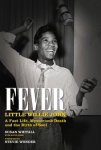 Long time Detroit rock journalist Susan Whitall has written a fascinating book about the life of one of the most under-appreciated, yet most influential R&B artists to emerge from the Motor City. Fever: Little Willie John’s Fast Life, Mysterious Death and the Birth of Soul, is a terrific read. As the publisher notes, “Willie John lived for a fleeting 30 years, but his dynamic and daring sound left an indelible mark on the history of music. His deep blues, rollicking rock ‘n’ roll and swinging ballads inspired a generation of musicians, forming the basis for what we now know as soul music.” If there ever was a seminal influence for the Motown sound, Willie John was it. Susan tells the tale with her legendary attention to detail, mixed with a page-turner prose that will make this one hard to put down once you start it. Continue reading “Three Book Recommendations for KeenerFans” →
Long time Detroit rock journalist Susan Whitall has written a fascinating book about the life of one of the most under-appreciated, yet most influential R&B artists to emerge from the Motor City. Fever: Little Willie John’s Fast Life, Mysterious Death and the Birth of Soul, is a terrific read. As the publisher notes, “Willie John lived for a fleeting 30 years, but his dynamic and daring sound left an indelible mark on the history of music. His deep blues, rollicking rock ‘n’ roll and swinging ballads inspired a generation of musicians, forming the basis for what we now know as soul music.” If there ever was a seminal influence for the Motown sound, Willie John was it. Susan tells the tale with her legendary attention to detail, mixed with a page-turner prose that will make this one hard to put down once you start it. Continue reading “Three Book Recommendations for KeenerFans” →
What We Learned from Ernie Harwell
By Scott Westerman – curator@keener13.org
 As the Hall of Fame voice of the Detroit Tigers, Ernie Harwell was the soundtrack of Springtime and the Voice of Summer.
As the Hall of Fame voice of the Detroit Tigers, Ernie Harwell was the soundtrack of Springtime and the Voice of Summer.
When you heard him on the air, it was a sign that a Michigan Winter was truly over. Open your window on a warm Summer evening, and you were likely to hear his voice echoing through the neighborhood, from the radios in countless convertibles, the kitchens in a hundred different fast food restaurants, from garages, living rooms, sailboats, and even during the glorious Summer sunsets on the Lake Michigan beaches. Continue reading “What We Learned from Ernie Harwell” →
What would Keener be like today?
By Scott Westerman – curator@keener13.org
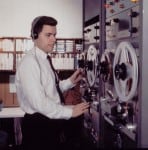 I spent the morning with WKNR’s Bob Green today. He is the most revered and most humble of the legendary Keener Key Men. And as the years go by, he’s still surprised at how what he calls “a fleeting moment” still resonates with so many of us.
I spent the morning with WKNR’s Bob Green today. He is the most revered and most humble of the legendary Keener Key Men. And as the years go by, he’s still surprised at how what he calls “a fleeting moment” still resonates with so many of us.
I was in Houston with MSU and was honored to be with my radio mentor. He took me through the city’s neighborhoods, remarking how the town is much more heterogeneous in both geography and demography than most realize. In what we boomers like to call “late middle age”, Bob looks great and is as sharp as ever. Continue reading “What would Keener be like today?” →

